Key takeaways:
- Access denial can arise from forgotten passwords, administrative changes, or network connectivity issues, highlighting the need for proactive measures.
- Effective communication with IT and regular reviews of access permissions can prevent and address access denial incidents.
- Utilizing tools like password managers and monitoring services can significantly enhance access management and troubleshooting processes.
- Setting up alerts and conducting audits fosters transparency and helps identify unnecessary access, improving overall security and efficiency.
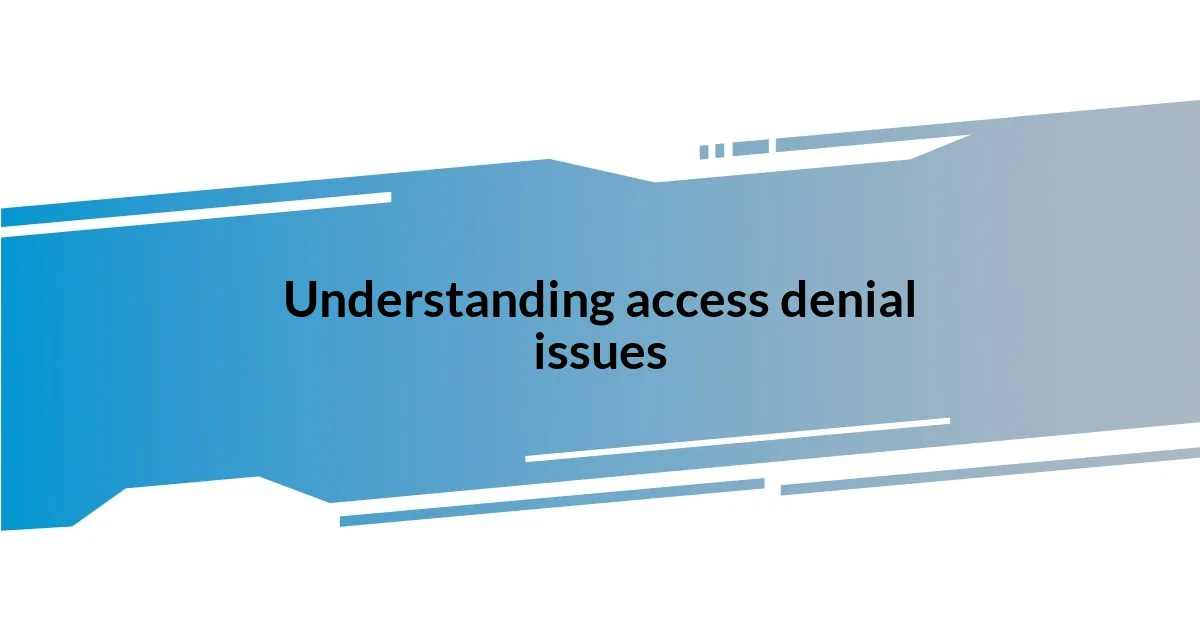
Understanding access denial issues
Access denial issues can feel incredibly frustrating, especially when they hinder your ability to perform daily tasks. I remember once being locked out of an important online account just hours before a deadline, which not only raised my stress levels but also made me question the security systems in place. Have you ever felt that sinking feeling of helplessness when your access is suddenly revoked?
Understanding the root causes of access denial begins with realizing that it can stem from various technical glitches, policy changes, or even user errors. In one instance, a simple password update by my company’s IT department unintentionally restricted many employees, including me, from accessing critical resources. Isn’t it surprising how a small adjustment can ripple out to affect so many people?
On a deeper level, access denial issues often reflect broader concepts of control and trust in technology. It makes you wonder—how much trust do we place in digital systems? When my access was denied again for what seemed like an arbitrary reason, I couldn’t help but ponder the balance between security and user accessibility. Experiencing these incidents firsthand has given me a newfound appreciation for clear communication and systematic checks in access protocols.
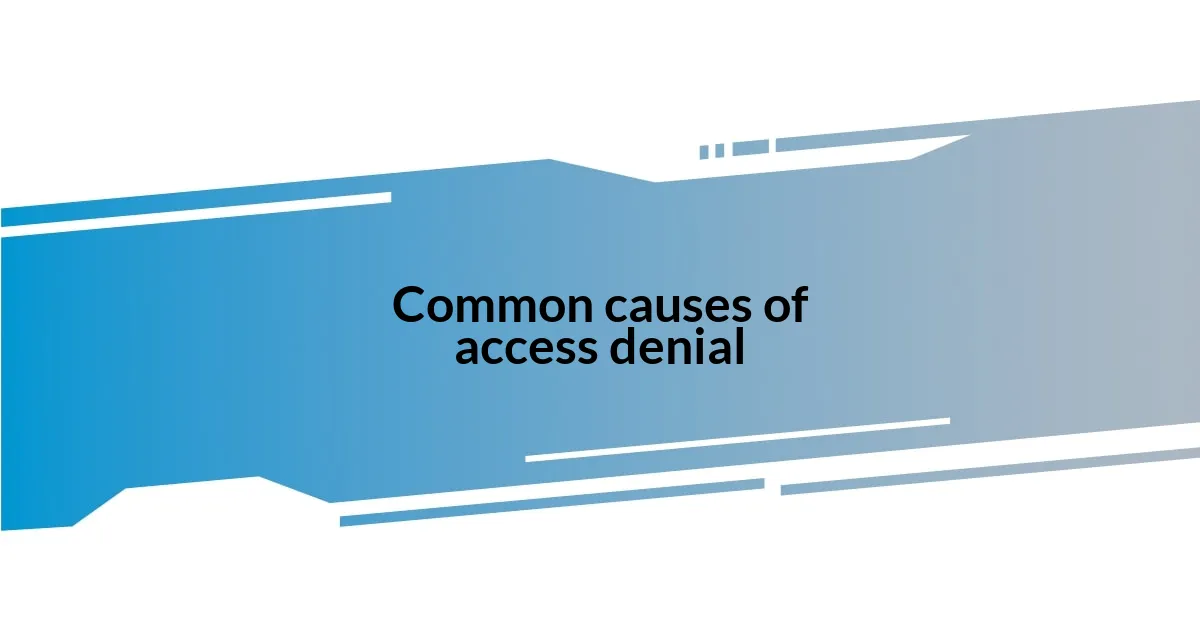
Common causes of access denial
Access denial can occur for several reasons, and each situation can feel more frustrating than the last. One of the most common causes I’ve encountered is forgotten or expired passwords. I remember the panic that set in when I realized my go-to password had changed without my knowledge due to a security policy update. This little blunder not only made me miss a crucial meeting but also reminded me how crucial it is to keep track of changes in organizational policies.
Another significant cause of access denial stems from administrative settings. I once experienced a situation where, after a routine staff reorganization, some permissions were inadvertently rescinded. I felt isolated from my team because I couldn’t access shared files, which made me realize just how essential clear communication is during transitions. Isn’t it interesting how the organizational dynamics can directly impact our digital access?
Lastly, network connectivity issues often play a sneaky role in access denial. I was on a tight deadline when the Wi-Fi went down in my office, resulting in temporary denial of access to essential cloud services. It was not only stressful but a stark reminder of how technology is sometimes at the mercy of external factors. These instances highlight the importance of having backup strategies in place to ensure uninterrupted access.
| Cause | Description |
|---|---|
| Forgotten or Expired Passwords | Common issue where users forget passwords or they expire due to security policies. |
| Administrative Settings | Occasionally incorrect permissions result from organizational changes, isolating users from necessary resources. |
| Network Connectivity Issues | Internet failures can temporarily deny access to cloud-based services and tools. |
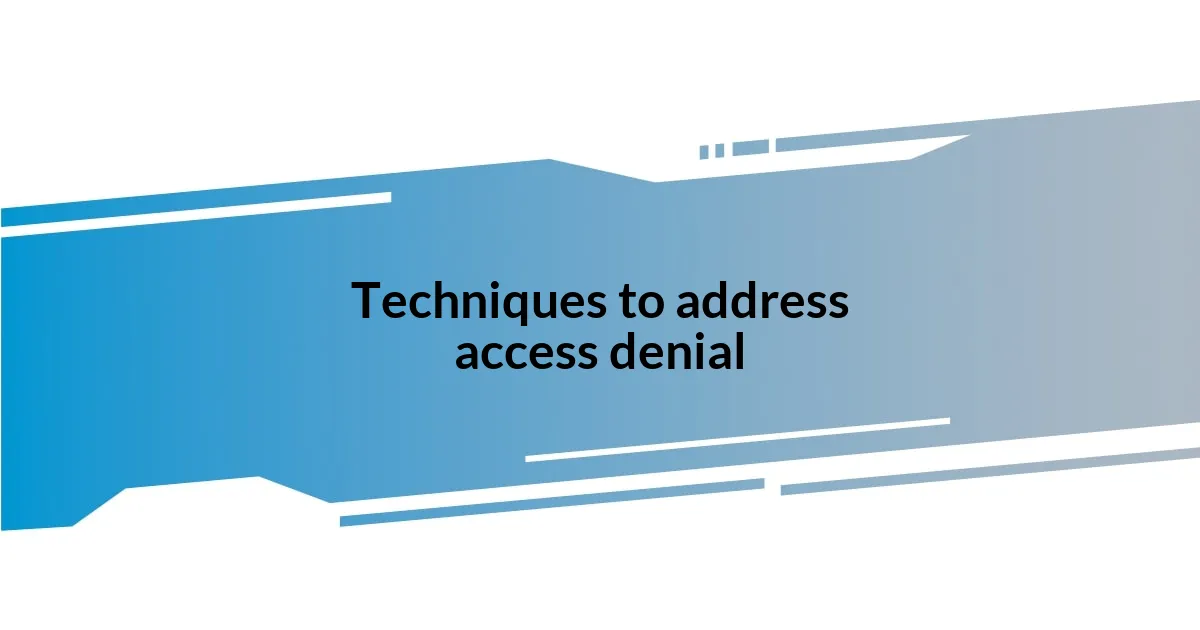
Techniques to address access denial
When I faced access denial, I realized that proactive communication could save a lot of anxiety. For example, I often initiate a quick check-in with IT whenever my access changes, confirming that everything aligns with me. This small step has made me feel more in control and informed. I can’t stress enough how beneficial it is to keep an open line with IT—preemptive action can mitigate a lot of unnecessary stress.
Here are a few techniques I’ve found useful in addressing access denial issues:
- Maintain a Secure Password Tracker: Use a password manager to keep track of changing passwords and avoid surprises.
- Regularly Review Access Permissions: Perform periodic checks of your permissions to ensure you have the access you need.
- Communicate Changes Early: Promptly inform your team and IT of any relevant updates that might affect access, particularly after organizational changes.
- Back-Up Access Options: Explore alternatives, like backup accounts or emergency access, to sidestep problems when primary access is unavailable.
In my experience, addressing access denial issues involves not just reacting, but actively anticipating potential barriers. I distinctly remember a time when I took the initiative to propose clearer access guidelines during a team meeting. This proactive approach led to the development of a shared document outlining access protocols, which significantly reduced confusion and frustration for everyone involved. It’s truly empowering to turn the table on access issues by fostering a collaborative atmosphere around it.
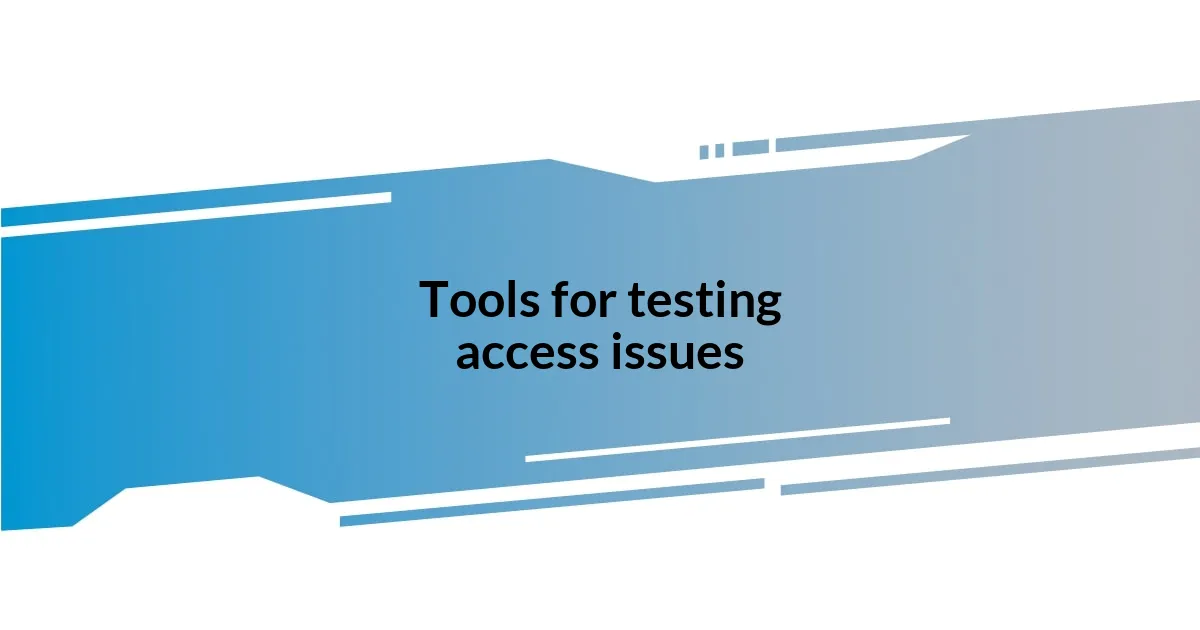
Tools for testing access issues
When it comes to testing access issues, leveraging the right tools can make a significant difference. I’ve found that tools like Pingdom and UptimeRobot are fantastic for monitoring website accessibility. I remember a time when I used UptimeRobot to track a critical service; knowing the moment it went down helped me act promptly instead of waiting for user complaints. Isn’t it reassuring to have real-time insights into your systems?
Another tool I often rely on is **Google Chrome’s Developer Tools**. With just a few clicks, you can simulate different user scenarios to check for access restrictions. I once used this feature to troubleshoot a permissions issue with a colleague, and it felt like piecing together a mystery—discovering exactly where the access chain broke. Combining such technical tools with communication can truly transform the troubleshooting process into a collaborative adventure.
For organizations, deploying tools like **Okta** or **LastPass** simplifies not just password management but also access control. I recall a tense moment when our team faced access issues during a live presentation. Thankfully, we had implemented LastPass, allowing instant sharing of credentials without compromising security. It was a lifesaver! How often do we underestimate the power of the right tools in managing access challenges? It taught me that proactive measures are equally vital to technical solutions.
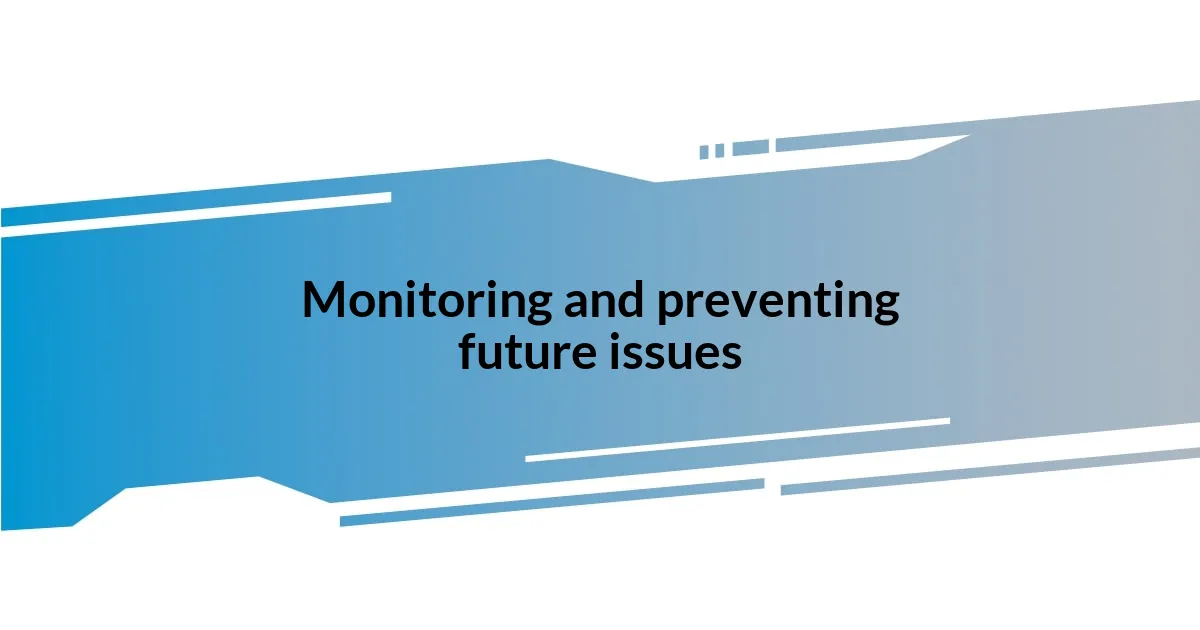
Monitoring and preventing future issues
To effectively monitor and prevent future access denial issues, I’ve learned to set up alerts for any changes in my access status. It’s a simple yet impactful strategy that gives me peace of mind, allowing me to respond quickly if anything goes awry. I once adjusted my alert settings after missing a critical notification; I can’t express how relieved I felt once I had that safety net in place.
Another method I’ve found invaluable is conducting regular access audits. Initially, I approached this task with reluctance, but I quickly realized the insights I gained were worth the effort. During one of these audits, I discovered that I had permissions for several outdated accounts—knowing that unnecessary access can be just as risky as lacking it was a game changer for me.
Collaboration also plays a crucial role in preventing future issues. By actively engaging with my team to discuss access needs, we’ve built a culture of transparency. I remember a particularly enlightening brainstorming session when we shared our experiences with access barriers; that not only strengthened our communication but also highlighted areas where we could streamline access protocols. Isn’t it fascinating how open dialogue can turn a potential headache into a strategic advantage?